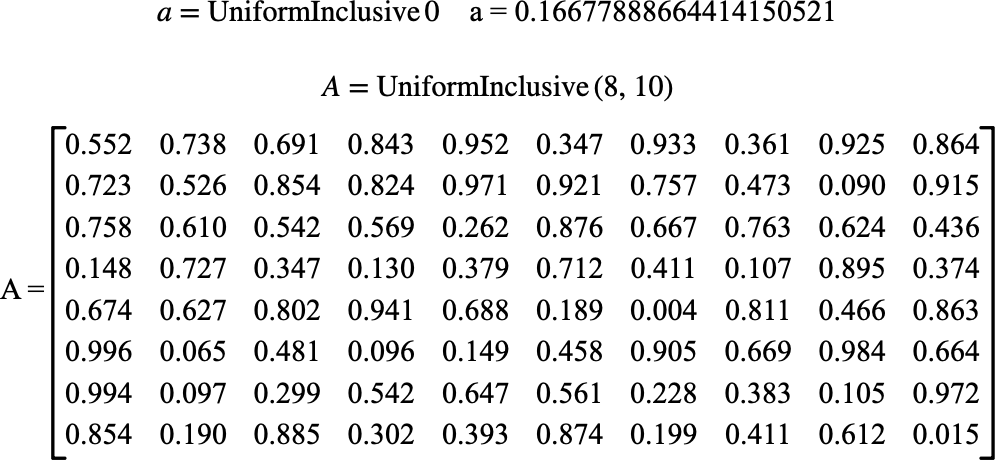\(\text{UniformInclusive}\)¶
You can use the \(\text{UniformInclusive}\) function to calculate one or more random variates in a uniform distribution over the range [0, 1].
You can use the \uniforminc backslash command to insert this function.
The following variants of this function are available:
\(\text{real } \text{UniformInclusive} \left ( \text{<any value>} \right )\)
\(\text{real matrix } \text{UniformInclusive} \left ( \text{<number rows>}, \text{<number columns>} \right )\)
The single parameter version requires a single parameter, \(\text{<any value>}\), that is ignored. The single parameter version returns a single random value.
The two parameter version accepts \(\text{<number rows>}\) and \(\text{<number columns>}\) parameters that determine the size of the real matrix to be returned. Values in the matrix will be in the range [0, 1].
Figure 215 shows the basic use of the \(\text{UniformInclusive}\) function.

Figure 215 Example Use Of The UniformInclusive Function¶
